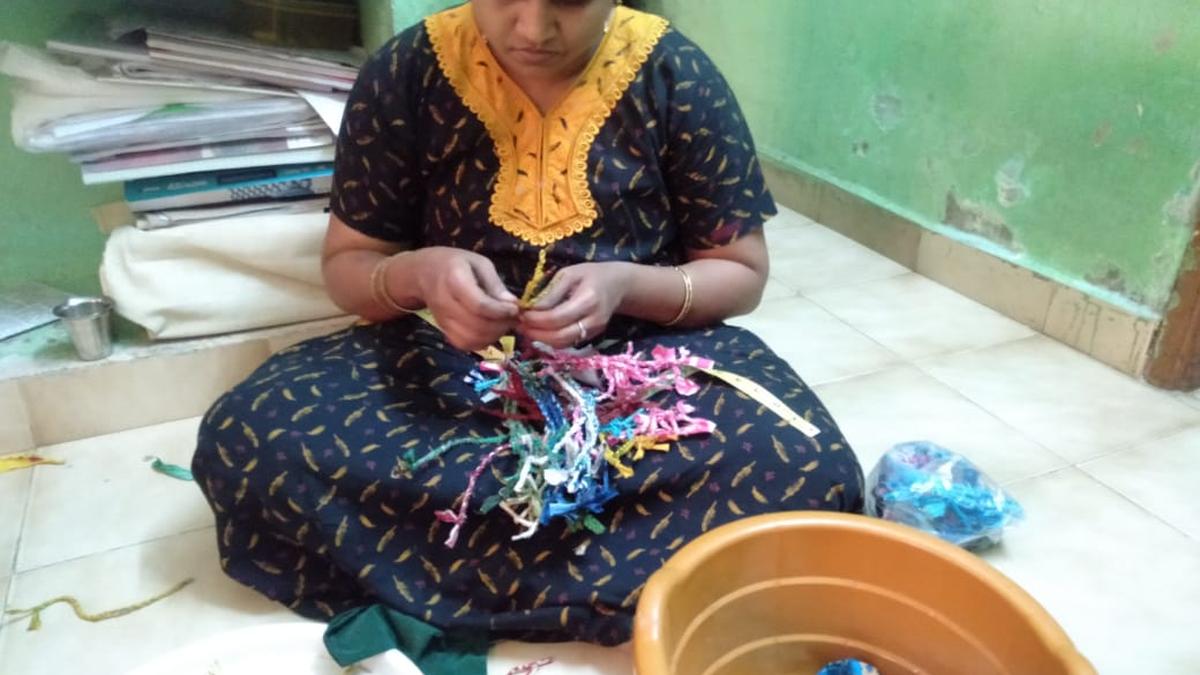
How to sustain a sustainable business
The Hindu
Small sustainable businesses might espouse a lofty philosophy, but that does not insulate them against the rough edges of the market one largely driven by hyper consumerism and a throwaway culture. Here is a survival kit based on the experiences of a few green businesses in Chennai
Sustainable businesses, no matter how small, are conscripted into climate action by default. Their contribution — through sustainable production processes and products that serve as eco-friendly alternatives — does chip away at the climate problem. While engaged in this larger battle, they are waging another at a personal level, a fight for survival. They need to stay afloat in a world that is largely at loggerheads with their ethos. As they slow down the process of production to be conscious in their choices of material, value craftsmanship and traditional artisans setting them high above the assembly line, and keep on eye on the waste being generated in the production process to make sure it is ploughed back into use and avoids the landfill, the larger world with its values of hyper consumption and fast fashion seem to pass them by. So, if you are a business that is small and green, how can you surmount the odds that are stacked up against you? How do you hold on to your green principles and still sustain your sustainable business? Here are pointers on how to do this, based on the experiences of a few small sustainable businesses in Chennai; these are four pillars that can shore up a small sustainable business.
STAKEHOLDER MAPPING
First things first: get the business model right for your small sustainable business — the model that suits your business the best.
Mamta Jain of Samposhan seems to be on a mission to promote Sustainable Development Goal 12 (sustainable and efficient use of natural resources and reducing waste). SDG12 pops along to define her, be it her Instagram page or LinkedIn profile. SDG5 too — which is about upholding gender equality and empowering women and girls. Her Adambakkam-based small business Samposhan prides itself on “saving 1615 plus kg of fabric scraps from Chennai’s landfills and converting them into products of everyday use and decor.” That is a part of Samposhan’s statement of faith, as expressed on its Instagram page (@thesamposhan).
Here is a valuable insight from Mamta.
Sustainable small businesses often ignore a vital step, stakeholder mapping. In Mamata’s words, “I first had a direct-to-consumer (B2C) approach in mind for my brand. The idea was to sell upcycled products directly to individual customers. However, after some time, I realised that this model would take longer to yield results than anticipated. While there is a growing awareness of sustainability, convincing consumers to choose upcycled products over traditional ones was a slow process. The demand for these products simply was not as strong as I had hoped. This realisation prompted me to pivot my strategy from B2C to a business-to-business (B2B) and a business-to-government (B2G) model. By targeting corporations, businesses and government bodies, I could reach larger audiences and make a greater impact on sustainability. I saw an opportunity to work with businesses that could incorporate sustainable practices into their operations, as well as government bodies that could help implement policies supporting sustainability. Through these partnerships, I hoped to bring my products to a broader market while encouraging larger-scale environmental practices. The switch from B2C to B2B/B2G allowed me to scale the impact of my products and build relationships that could foster more substantial changes in the industry. This strategy was not only about expanding my customer base, but also about contributing to the larger goal of making sustainability a priority in businesses and government sectors.”
She continues: “To summarise my approach to sustaining my sustainable brand: first and foremost, building a sustainable business requires thorough stakeholder mapping— understanding who the key players are and the impact you are creating. Unlike mainstream businesses that focus on scaling through investments, sustainability ventures require a more thoughtful approach — start with low-cost pilots, keep resources minimal, and measure your impact consistently. While we are still in the early stages, we have managed to save 1,615 kg of waste from landfills and conserved over 500,000 litres of water. The key lies in identifying and pursuing the real impact your business is making, and continuously building knowledge and capacity in this new and evolving climate space.”

The Puducherry government has decided to launch a scheme on April 14, 2025, to distribute free 20-litre water cans to households in places in the Union Territory (UT) where the quality of drinking water has deteriorated, Minister for Public Works K. Lakshminarayanan informed the Assembly on Wednesday (March 19, 2025).












